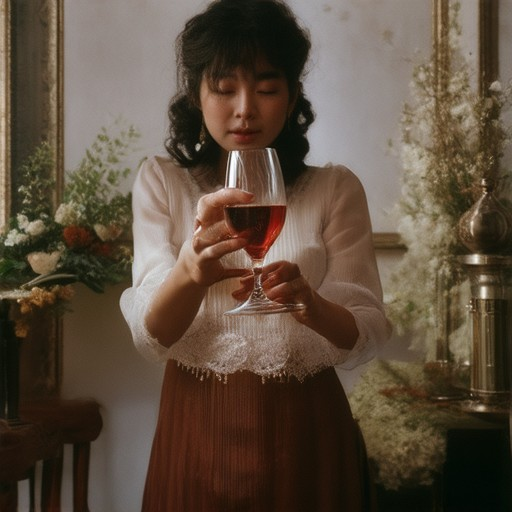Discover the art of wine and regional foods pairing with expert tips and strategies that will elevate your dining experience. Whether you’re hosting a special occasion or simply exploring new culinary horizons, mastering the synergy between wines and regional cuisines can transform your meals into unforgettable moments. In this comprehensive guide, we’ll delve into the golden rule of wine and food pairing, the wine 20 rule, and how to create a perfect wine and regional foods pairing menu. From understanding the basic principles to leveraging tools like wine pairing generators, this article offers actionable insights and examples to help you navigate the world of wine and food combinations with confidence. Explore how regional wines complement local dishes, learn about the best practices for successful pairings, and discover how to create a wine and food pairing experience that delights both the palate and the mind.
Key Takeaways
- Understand that personal preference is the cornerstone of successful food and wine pairing.
- Align wine flavor profiles with food types: sweet wines for desserts, acidic wines for bold foods, earthy reds for hearty meats, and light whites for seafood.
- Match wine weight and body to dish richness: light-bodied wines for salads, medium-bodied for pasta, and full-bodied for rich sauces.
- Regional cuisines often dictate traditional pairings, such as Italian wines with pasta or French wines with refined dishes.
- Experiment with unconventional pairings to uncover unique and delightful combinations.
- Follow the 5 Golden Rules of Wine Pairing: balance sweetness, match intensity, consider tannins and acidity, respect regionality, and trust personal preference.
- Optimize wine serving temperature with the Wine 20 Rule: chill white and rosé wines for freshness and acidity, and cool red wines to enhance smoothness and fruitiness.
- Use the Wine 20 Rule to ensure your wine is served at its ideal temperature, boosting flavor and pairing success.

What Wines Pair Well With What Food?
Pairing wines with food is an art that enhances the dining experience. Here’s a guide to help you choose the perfect wine for your meal:
- White Wines:
- Chardonnay – Pairs well with fish, chicken, and creamy dishes.
- Sauvignon Blanc – Ideal for seafood, salads, and light appetizers.
- Riesling – A great match for spicy foods like Asian cuisine and desserts.
- Moscato – Works well with fruits, cheeses, and mild dishes.
- Red Wines:
- Merlot – Perfect for red meats, pasta, and tomato-based dishes.
- Cabernet Sauvignon – Pairs beautifully with steak, lamb, and hearty stews.
- Zinfandel – Great with BBQ, smoked meats, and bold flavors.
- Pinot Noir – A versatile option for chicken, pork, and vegetables.
- Sparkling Wines:
- Champagne – Ideal for celebratory moments, seafood, and appetizers.
- Prosecco – Pairs well with antipasto, light pasta, and fruit dishes.
- Bubblegum Shiraz – Great with grilled meats and rich, hearty dishes.
For more expert wine pairing tips and recommendations, visit our wine pairing guide on FineVines.net.
Why Regional Wines and Regional Dishes Work Well Together
The synergy between regional wines and regional dishes is rooted in several key factors:
- Shared Flavor Profiles: Wines and dishes from the same region often share similar flavor notes due to common ingredients, climate, and soil conditions. For example, the earthy and herbal characteristics of Italian Chianti complement the robust flavors of authentic Italian cuisine.
- Acidity and Palate Cleansing: The acidity in many regional wines acts as a palate cleanser, cutting through rich or fatty dishes, allowing the taste buds to reset and appreciate the next flavor. This dynamic enhances the overall dining experience.
- Cultural Familiarity: Long-standing traditions in regions like Italy and France have established classic pairings between local wines and foods. These combinations are often intuitive and expected by diners, adding a layer of comfort and trust to the meal.
- Terroir Influence: The concept of terroir, which emphasizes the sense of place in wine, extends to food. Both regional wines and dishes carry the essence of their environment, creating a cohesive connection that enriches the dining experience.
- Complementary Cooking Methods: The way dishes are prepared—such as grilling, roasting, or sautéing—can naturally complement the wine’s characteristics. For instance, the smoky flavor of grilled meats pairs beautifully with a bold red wine.
Examples of this phenomenon abound. In France, Bordeaux wines are famously paired with duck and game, while Burgundy excels with beef dishes like boeuf bourguignon. Spanish Rioja wines complement tapas and grilled meats, while German Riesling pairs perfectly with light, citrusy dishes.
Ultimately, the harmony between regional wines and dishes creates a balanced and memorable culinary experience, where each element enhances the other, rather than competing for attention.

Rules for Wine and Food Pairing
Wine and food pairing is an art form that enhances the dining experience by complementing flavors and textures. Here are the essential guidelines to master this skill:
General Rules
- Match Acidity with Tannins: The acidity in wine helps cut through fatty foods, while tannins in red wines complement fatty meats. Balance is key.
- Consider Sweetness and Desserts: Sweet wines like Sauternes pair beautifully with rich desserts, while dry wines work well with citrus-based dishes.
- Start Lightly and Gradually Intensify: Begin with lighter wines for lighter foods and progress to fuller-bodied wines as the meal becomes heartier.
- Personal Preference Matters: There’s no one-size-fits-all rule—ultimately, trust your palate and enjoy what you like!
How to Pair Wines with Foods
- White Wines: – Pair with light meals like salads, fish, and poultry. – Opt for Chardonnay with buttery dishes like lobster or creamy pasta. – Try Riesling with spicy Asian cuisine or fresh ceviche.
- Red Wines: – Match with hearty meats like steak, lamb, and pork. – Choose Cabernet Sauvignon for ribeye or Syrah for roasted vegetables. – Sparkling wines like Prosecco are perfect for celebratory occasions.
- Bubbles and Appetizers: – Champagne or sparkling wines are ideal for hors d’oeuvres and light appetizers. – Pair with caviar, oysters, or fresh fruits.
Advanced Tips
- Taste Before Pairing: Take a small sip of the wine and a bite of the food to gauge compatibility.
- Consider Regional Cuisines: Some dishes may pair better with wines from specific regions due to shared flavor profiles.
- Experiment with Combinations: Don’t shy away from trying unusual pairings—sometimes unexpected matches create the most memorable moments.
Remember, the goal is to enjoy yourself! There are no strict rules, just guidelines to inspire your creativity in the kitchen and at the table.
For more expert insights and detailed wine pairing guides, visit our Fine Vines website .

Rule of Thumb for Food and Wine Pairing
The art of pairing food and wine involves understanding how different flavors, textures, and aromas interact. Here’s a structured approach to crafting perfect pairings:
- Primary Rule: Personal Preference First
- The foundation of successful pairing lies in personal preference. If someone dislikes a particular wine, the pairing becomes challenging. Focus on wines you enjoy, as this enhances the overall experience.
-
Flavor Profiles Match Best
-
- Wines with high acidity pair well with bold, acidic foods like tomatoes or citrus.
- Sweet wines complement desserts, fruits, and spicy dishes.
- Earthy, robust reds are ideal for hearty meats like steak or game.
- Light, crisp whites are perfect for seafood and delicate dishes.
-
Weight and Body Consideration
-
- Light-bodied wines like Pinot Grigio or Sauvignon Blanc pair seamlessly with salads and light appetizers.
- Medium-bodied wines such as Chardonnay or Merlot complement pasta, risotto, and chicken dishes.
- Full-bodied reds like Cabernet Sauvignon or Syrah are excellent with beef, lamb, and rich sauces.
-
Culinary Tradition Matters
- Regional cuisines often dictate traditional pairings:
- Italian dishes pair beautifully with Chianti or Barolo.
- French cuisine complements Burgundy and Sauternes.
- Asian foods like sushi or curry can be paired with crisp Riesling or Gewürztraminer.
-
Experiment and Enjoy
- Don’t shy away from unconventional pairings. Experiment with lesser-known varietals to discover unique combinations that delight your senses.
Remember, the goal is to enjoy the journey of exploration. With a little practice and an open mind, you’ll master the art of food and wine pairing, creating memorable experiences every time.
What is the golden rule of matching wine and food?
Wine pairing is an art that combines the complexities of flavor, aroma, and texture to create a harmonious experience. Here are the key principles to guide you:
The 5 Golden Rules of Wine Pairing
- Sweetness Balance : A wine’s sweetness should complement the dish. Look for wines with similar sugar levels to match desserts or rich dishes.
- Intensity Match : The wine’s flavor intensity should align with the food. A bold red wine pairs well with hearty meats, while lighter whites suit delicate fish or chicken.
- Tannins and Acidity : Wines with high tannins pair best with fatty meats like steak, while acidic wines cut through creamy cheeses or rich sauces.
- Regionality : wines often pair well with the cuisine of their origin. For example, Italian wines may pair perfectly with pasta or risotto.
- Personal Preference : There are no strict rules—what matters most is what you enjoy. Experiment to find your unique combinations.
Remember, the goal is to enhance your dining experience, so let your senses guide you. Explore these guidelines to discover the perfect wine-food matches!
Learn more about wine education and pairing tips .

What is the Wine 20 Rule?
The wine 20 rule is a simple yet effective guideline for optimizing the flavor profile of white, red, and rosé wines. By following this rule, you can enhance the enjoyment of your wine experience.
For White Wines and Rosé:
Take your white or rosé wine out of the refrigerator 20 minutes before serving. This allows the wine to reach the optimal serving temperature, which is typically around 50-60°F (10-16°C). This temperature range enhances the wine’s aromas and flavors, making it more enjoyable to taste and smell.
For Red Wines:
Red wines benefit from a slightly different approach. Let your red wine sit in the refrigerator for about 20 minutes before uncorking it. However, unlike white wines, reds can continue to develop and soften in flavor when served slightly cooler than room temperature. This cooling period helps mellow out the tannins and brings out the wine’s fruitiness.
Why Does the 20/20 Rule Work?
The 20/20 rule works because it ensures your wine is served at its ideal drinking temperature. White wines and rosés are best enjoyed slightly chilled to preserve their freshness and acidity, while red wines benefit from a light chill to enhance their smoothness and fruit-forward characteristics.
When to Apply the Rule:
- Before serving white or rosé wines, take them out of the fridge 20 minutes prior to drinking.
- For red wines, remove them from the fridge 20 minutes before you plan to serve them.
- This rule applies to both bottle and glass servings.
Benefits of Using the Wine 20 Rule:
- Brings out the best flavors and aromas in white, red, and rosé wines.
- Makes it easier to pair wines with food due to optimal temperature.
- Prevents the wine from becoming too warm, which can alter its taste and bouquet.
Conclusion:
The wine 20 rule is a quick and easy way to ensure your wine reaches its peak flavor potential. By giving your white, red, or rosé wine just 20 minutes of cooling time before serving, you can enjoy a more balanced and pleasurable tasting experience.
For more wine tips and expert insights, visit our Fine Vines website . Explore our comprehensive wine guides, tasting notes, and pairing suggestions to elevate your wine knowledge and appreciation.



0 Comments